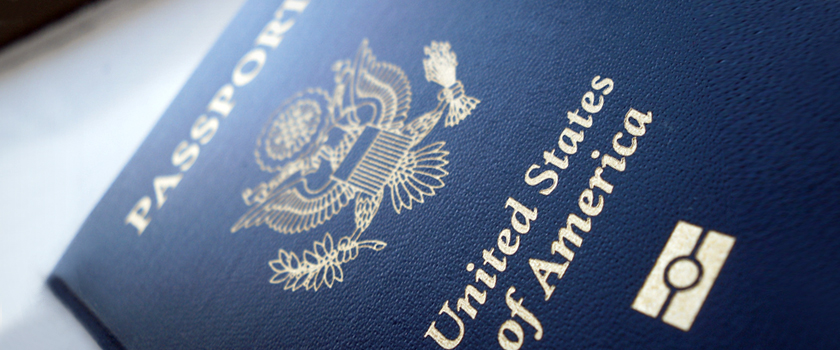2025 Offer Request a Quote Today and Grab a $50 Coupon for Free!
In this article, we will learn about the advancement of translation technology, the benefits it could do for your company, and how to pick the most appropriate technology provider to meet your needs in translation.
Technology for translation has been around for over 50 years, but since our world is becoming interconnected due to globalization, it's become more vital.
A recent report found that the present technology for language encompasses more than 700 options. Given this complexity, how do you choose an appropriate translation tool that meets your requirements?
First, you must learn translation technology and how to benefit from it.
If you are interested in learning more, keep reading.
Translation Technology is the application of software tools to assist in converting written language from one to another. Similar to most tasks aided by technology, translation coupled with advanced tools can boost productivity, accuracy, and overall efficiency.
"Translation technology" encompasses everything from terminology and translation memory managing tools, as well as machines that translate (MT), virtual technology for interpreting, and even technology for voice-to-text.
Before the introduction of technology for translation, manual translation was the norm by translators using the dictionary on paper and making use of their best judgment.
The business's negative impact was severe because of:
• Delay in time-to-market
• A general lack of consistency across all content
• The high cost of inefficient operations
• The quality of output is lower due to needing to look for any errors manually
The advent of technology for translation revolutionized the entire process. Tools like memory for translation- which keep previous translations to help speed up future projects- and technology for managing translations aid in automating routine processes and improving control.
Today, technology for translation let businesses:
• Make sure the quality is maintained by checking for grammar and spelling mistakes.
• Improve consistency between content by storing translations from previous versions, which can be used again or used for future projects.
• Increase efficiency in operations by automating tasks related to translation management
• Speed up time-to-market through the creation of more incredible content within a shorter amount of time
In today's ever-changing, fast-paced world, customers are demanding effortless experiences that are easy to use and convenient as possible. They also require high-end goods and services which are sensitive to culture and customized to their requirements.
A process that adapts a company's message design, appearance, and experience to the specific locale or culture is referred to as localization.
Although localization can involve a variety of elements, like the packaging for products, web design, or business strategies, it's the conscious translation of a company's message to a specific language that's central to the success of localization.
In the digital economy, it may be required to provide hundreds of types of content in different languages to a wide range of people.
Translation technology allows companies to meet these requirements and optimize their translation budgets by increasing speed and efficiency while reducing costs.
The decision-makers of today who need to find a way to balance the demands and expectations from globalization while keeping a check on their costs and productivity can count on technology for translation to ensure they meet their goals across all areas.
Translation technology allows businesses to expand their global reach quickly, efficiently, and economically by enabling them to speed up the localization process. It offers flexible, practical solutions that allow them to achieve new markets quicker and more efficiently than ever.
Translation Technology is continuously developing, with new advancements every year.
This is a (non-exhaustive) collection of widely used technology for translation.
Tools for CAT are programs developed to aid translators in their tasks. Tools for CAT use databases of translations that have been previously completed (usually of a specific source language and the target language) along with frequency information, segmentation information, and many other resources that aid in translating.
An interface for CAT tools visually displays two panels or columns: One shows the source text, while the second indicates the targeted reader. The tool will generally break down the source text into smaller chunks, such as sentences or paragraphs. This makes it easier for translators to track how information flows.
CAT tools typically come with a variety of capabilities, for example:
• Translation memories allow translators to reuse their previous translations.
• Glossaries or term bases could be utilized to look up specific terms for projects or brands.
• The ability to navigate to additional resources to gain more information, including comments or images left by translators who aren't Project managers and any other corporate stakeholders.
• Advanced tools for navigation and search
• Reports on how much of the translation is complete
• Auto-completion of segments in the event that they identical match to previously translated content
• Quality assurance tools search for translation errors, including untranslated segments and missing numbers. Instances in which the same word is used in two different versions
• The possibility of creating an end-to-end translated document that instantly is a mirror image of the original document's formatting
• Integration with other translation technologies like neural machine translator engines
• Tools for CAT have transformed translation technology, making it easier for companies to streamline the process of translating and managing massive amounts of content more efficiently, saving time and money.
• Translators' primary advantage is that they are able to utilize the time saved from repetitive tasks to concentrate more on the translation process itself.
• These tools are also adaptable and flexible, making them a must for any company looking to improve its translation process based on the needs of its content and users.
Machine translation (MT) is an automated system that allows the production of translated content without a human's intervention. As we have previously discussed in this article, machine translation isn't something new.
However, the advancements in technology that took over the past few times have resulted in an increase in the usage of MT. Machine translation is different from CAT tools because it does not rely on human input but instead creates the translations entirely on its own.
Since their beginning, machines translation engines have been into one of the three categories below:
• Machine translation based on rules (RBMT): The engine can translate sentences and words using a set of rules that can be altered to the needs of the individual.
• SMT: Statistical Machine Translation (SMT): The system can translate based on the corpus (a massive text in parallel) that the engine was in training.
• NMT: Neural Machine Translation (NMT): The engine is powered by AI that can mimic the human brain's behavior when it processes the language. Thanks to machine learning, machines can simultaneously comprehend whole sentences or even entire paragraphs rather than translate word for word.
Due to the variety of translator software available, businesses can choose which solutions will work best for them from a supplier. But how do you determine if a translation technology company is the best choice for your company?
The translation technology providers do not have to provide only the best mix of features and tools. They also have been able to work with existing systems while allowing for scaling. It is also essential to determine whether their technology is accessible for the users you have.
Creating a Request for Proposal (RFP) can help articulate the features and advantages of your preferred technology provider for translation. This will enable you to sort through the myriad of options and determine which ones will meet your needs.
Before you draft the RFP, There are a few things to take into consideration when evaluating possible suppliers include:
• Find providers who provide specific examples of projects they've completed in collaboration with other customers.
• Find a company that can assist you in deciding the features that will be most beneficial for your company. The translation technology provider should be able to give guidance on how the tools affect workflows and help improve processes.
• Choose vendors that can provide everything you require right now (e.g., essential integration with one of your current systems) but also offer the flexibility to meet your company's needs in the near future.
• Think about the kind of support you'll require. Translation technology providers should provide instruction and assistance with troubleshooting when needed.
• Choose whether you would prefer an on-premise or cloud-based system.
• Find a company that has the most sophisticated machine translation using AI.
• Ultimately, choosing a program that works on all operating systems (Linux, Mac, Windows) and from any location is crucial as freelancers are expected to work from home.
Tools for translating are now significantly more sophisticated than they were just two decades ago due to machine learning. Technology for translation will only get more potent as artificial intelligence advances.
However, translation can never be fully automated since humans and specially-designed machine translators have their own advantages that complement one another effectively (e.g., humans excel at exploring the boundaries of their thinking, and AI is great for automating tedious tasks).
In the end, experts agree that the future of translation will blend human and machine translation powered by AI to give the highest quality outcomes.
At the final stage, humans and AI tools will function as a single team of translators, each player playing its unique function. The transition will likely be from human-assisted computer translation to computer-assisted, human-assisted translation.
Machine translation post-editing will guarantee the accuracy of AI-generated translations and efficiency and that human translators make final changes to meet the needs of specific audiences.
Translation technology will allow translators to concentrate on more intricate translations, leaving the repetitive tasks to AI-powered tools.
It's no longer a matter of whether or not to utilize translation technology. But a question of how soon an organization can apply machine translation to its processes.

Passport is basically a document, which allows you to travel another country easily. It is now abundantly used because people
Read more
When someone mentions the languages in the United States, English is the first language that pops up in your mind.
Read more
In the legal premises of educational setup, you are well aware that you need to meet many demands. Living at
Read more
English was viewed as the language utilized by 59% of websites, making it the most conspicuous language on the web
Read more
Key Benefits of Promoting Your Business with the Help of Video Marketing Video marketing is not complex, rather it is very
Read more
If you are adventurous enough, you will love to travel all around the world but travelling all around the world
Read more
Gaming is the fastest-growing industry that has captured the minds of people around the world. Not just that, the gaming
Read more
As you know that this is the age of science and progress. Tremendous developments are taking place. These progresses are
Read more
A license is a permission granted to a person issued by the legal authorities to allow you to fulfill an
Read more

